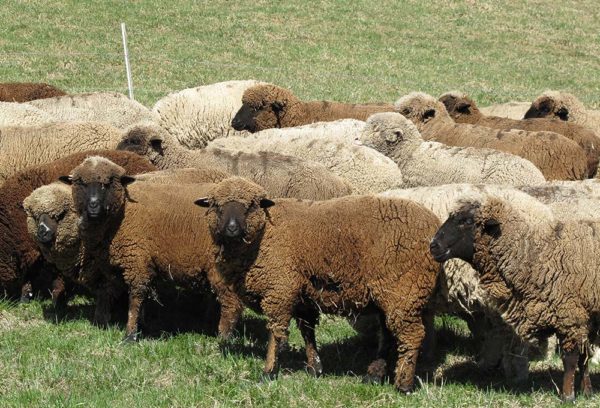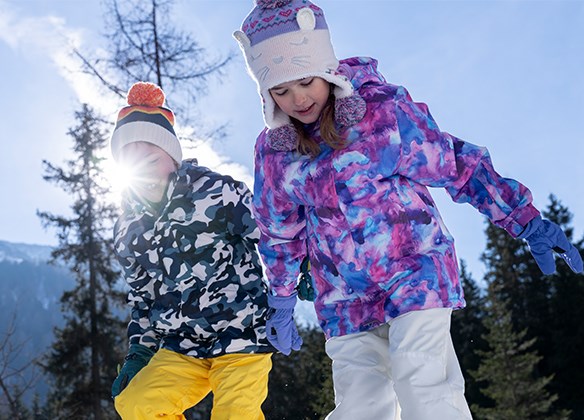What Is The Main Difference In Merino Sheep And The Other Breeds?
Merino sheep differ from other breeds of sheep in numerous ways. Fine woolMerino sheep are unique in many ways. Merino wool is more delicate and soft than the other breeds of sheep. Merino wool is sought-after because of its warmth, comfort and versatility.
Adaptability Merino sheep have high levels of adaptability to different climates. They can live in cool and hot climates.
Resilience- Merino sheep are known for their resilience and toughness. They are immune to most common illnesses and can withstand the harshest conditions.
Fertility - Merino sheep can produce many offspring in one year. They are fertile to the max.
Merino sheep possess a special pattern of grazing that helps safeguard their health and wellbeing. They prefer to graze in a controlled and carefully selected way. This is a way to avoid poisonous plants and excessive grazing.
Breeding- Merino sheep are selectively bred to produce the best quality wool. This has resulted in a large variety of Merino sheep breeds, each with distinct traits and characteristics.
Merino sheep are valued for their fine wool and adaptability. They are an important resource in the wool industry, and are highly valued by breeders and farmers across the globe.

What Are The Basic Layers Of Merino-Wool Differ For Mediumweight, Lightweight And Heavyweight?
The fabric's warmth, thickness, and weight are what distinguishes light, mediumweight, and heavyweight Merinowoo base layers. Below is a breakdown of differences between the three kinds of base layers. Lightweight Merino wool base layers are typically composed of a fine and breathable fabric that is able to endure mild and cold temperatures. This type of base layer is best for intense activities that require sweating. It's made of an extremely thin fabric that is able to wick away moisture while keeping the body cool. They can also serve as a layer of base during winter weather, under other layers.
Midweight Merino base layers are constructed of a heavier fabric than lighter-weight base layers. They offer more warmth and insulation. This base layer is ideal in cold to cool conditions, and it is a good option for any activity that has low to moderate sweat production.
The heavyweight Merino wool base layers made of the most warm and dense fabric are ideal for cold conditions. This layer is perfect for leisure activities like skiing or snowshoeing where you shouldn't expect sweat to be a factor.
The weather conditions and the level of activity will influence the choice of the Merino wool base layer. A lightweight base layer is suitable for activities with high intensity in cool to warm conditions. A middleweight base layer is suitable for cool to cold temperatures and low to medium-intensity activity. A heavyweight base layer works best in very cold temperatures and activities that require low intensity. Consider that you can layer up or down in accordance with the weather conditions and the weather conditions, so you should select a layer that's slightly heavier than too heavy. It is also important to take into consideration the way that the base layer fits and whether it will allow the user to move about freely. Go great ski thermals at koraoutdoor.com for more recommendations as well as icebreaker men's merino wool base layer, hanes insulated underwear, mens fleece thermal pants, realtree thermal underwear, thermal undergarments, hanes thermal underwear set, merino wool base layer patagonia, thermal base layer pants, men's merino 250 base layer one piece, hanes waffle thermal, with more- Free Facts For Deciding On Ski Base Layers 3f01615 and Best Suggestions For Selecting Base Layers For Skiing.

How Can I Select The Best Ski Layer When I Combine Merino And Hisalayan Yak?
There are many factors to consider when choosing the ideal mix of Merino and Himalayan wool to make the base layer of your skis. These are the most important factors to consider. Weather conditions: Consider the weather and temperature that you'll ski in. A base layer that has more insulation, like Himalayan Yak wool may be more appropriate when the weather is very cold. Lighter Merino wool base layer may be appropriate for milder weather.
Activity level- Think about your level of activity and how much you tend to sweat. Merino Wool, which has great moisture-wicking characteristics, might be the best option for those who sweat often.
Comfort- Select an area that is comfortable and is easy to move into. Find base layers that are designed to move with you, and provide a full range of motion. Avoid any base layer that's restrictive or too tight as they can limit mobility and cause discomfort.
Individual preference. The best base layer mix is determined by your individual preferences. A base layer with greater insulation might be more appealing to some , while others may prefer a lighter layer. Explore different combinations to see what one feels most comfortable and effective for your requirements.
The best base layer mix consisting of Merino wool and Himalayan yak wool is contingent on your personal requirements and the conditions you will be skiing in. Think about the weather, the level of activity, your comfort and personal preferences in order to choose the right base layer for you. Go try women's ski clothes at koraoutdoor.com for site info as well as lightweight long underwear mens, long underwear shirt, 5xlt thermal shirt, aclima base layer, black long johns mens, black long sleeve thermal top mens, smartwool long sleeve mens, cross country ski base layer, heavyweight merino wool base layer, mens base, with more- Free Advice For Deciding On Merino Wool Base Layers and Recommended Hints For Choosing Ski Base Layers.

Merino And Himalayan Himalayanyak Wool Are Superior Than Cotton Polyester Nylon Fleece And Cotton Alternatives For Skiing Wear.
Merinowool and Himalayanyak wool are superior than nylon, polyester, fleece, nylon and fleece for skiing clothing. Warmth - Merinowool as well as Himalayanyak wool are extremely effective insulations. They help keep you warm in freezing temperatures. Merino wool, Himalayan yak wool, and polyester are not as insulating as nylon or cotton. They have a higher temperature to weight ratio, which allows them to be lightweight and comfortable to wear, while still offering superior insulation.
Moisture management Merino wool or Himalayanyak wool are excellent at managing moisture. Both fabrics naturally wick moisture away, which means they draw moisture from your skin and transfer it to the outer layers of the fabric, where it is able to evaporate. This is in contrast to cotton, which retains moisture. It can be heavy and uncomfortable if it gets wet.
Breathability: Merino wool as well as Himalayan Yak wool are extremely air-tight. They allow air to circulate throughout the fabric, which helps regulate the body's temperature, and also prevents excessive heat. This is important for clothing designed for skiing, since it lets you remain at ease while you're ski. Polyester, nylon, and fleece, on the other hand are more breathable however they trap moisture and heat. This can cause you to feel uncomfortable and clammy.
ComfortComfy Merino, Himalayan and yak wools are extremely soft and comfortable. They are highly elastic and stretchy. This means that they will move in harmony with your body and allow you to move with a wide range. Polyester, nylon, and fleece however, can be rigid and uncomfortable. This can limit the range of motion and cause discomfort.
SustainabilitySustainable Merino wool and Himalayan Yak wool are natural and sustainable fibers that can be biodegradable and recyclable. They are more sustainable than synthetic materials like nylon and polyester that are made from non-renewable resources, and require a longer time to degrade.
Merino wool is superior to nylon, polyester and nylon when it comes to ski clothes. They are warm, durable, water-wicking, soft and breathable. This makes them an excellent choice for anyone seeking to remain comfortable during skiing. More- Top Advice For Choosing Ski Mid Layers and New Reasons For Picking Merino Wool Base Layers. |


 新浪微博
新浪微博 QQ空间
QQ空间 人人网
人人网 腾讯微博
腾讯微博 Facebook
Facebook Google+
Google+ Plurk
Plurk Twitter
Twitter Line
Line
